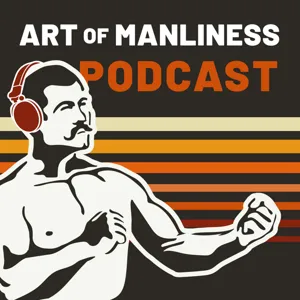Podcast Summary
Exploring AI's Impact on Industries and Memory Palace Technique: AI transforms industries like healthcare, retail, and entertainment while memory palace technique enhances memory by using spatial memory to catalog information. Organizations like St. Jude provide hope for childhood cancer patients, and tools like Apple Card offer cash back rewards to make purchases affordable.
Artificial intelligence will play a significant role in shaping the future, and the latest technology, such as memory palaces and AI, are making a difference in various aspects of life today. The podcast "Technically Speaking" explores how AI is transforming industries like healthcare, retail, and entertainment. Meanwhile, Nelson Dallas, a memory athlete, uses the memory palace technique to remember vast amounts of information. Despite having an average memory, many people struggle to remember essential details. Our memories are constantly being updated, and sometimes the information that gets added is inaccurate. The memory palace technique, also known as the method of loci, is a powerful mental tool that uses spatial memory to catalog information. It's fascinating to learn about, and Nelson Dallas, one of the leading memory athletes in the world, can give us valuable insights into this memory enhancement technique. Moreover, organizations like St. Jude are making a difference in people's lives by providing hope and resources for those facing childhood cancer. And tools like Apple Card offer cash back rewards to help make everyday purchases more affordable. Overall, technology is changing our world, and understanding how it works can help us make the most of it. Whether it's through AI advancements or memory enhancement techniques, the possibilities are endless.
Ancient Memory Technique: The Memory Palace: The memory palace technique, also known as the method of Loki, is an ancient method to improve memory by associating information with spatial locations in a mental house.
Our memories are not static, but dynamic and constantly updated each time we recall them. This is because we live in a complex world that requires us to navigate multiple movable objects and symbols, and our brains need to keep up with the latest information. The ancient practice of the memory palace, also known as the method of Loki, is a technique to help remember information by associating it with spatial locations in a mental house. This method was discovered by the Greek poet Simonides after a tragic event at a party where he was able to remember the seating arrangement of the guests based on their positions. The memory palace technique has survived for centuries and was used by notable figures like Dominican monk Giordano Bruno, despite the controversy surrounding his beliefs. By creating mental associations between facts and spatial locations, we can make the information more memorable and interesting. This technique has been used in various fields, including literature and psychology, and even inspired Thomas Harris's novel "Hannibal," where the character Hannibal Lecter uses memory palaces for his patients' records.
Using a memory palace to enhance memory recall: Creating vivid mental images of spaces and associating items to be remembered with specific objects or characters within those spaces can significantly improve memory recall. Use surreal and memorable objects for maximum effect.
The use of a memory palace, a mental construct where information is placed in vividly imagined locations, can significantly enhance memory recall. This technique, which dates back to ancient Roman times, involves creating detailed mental images of spaces and associating items to be remembered with specific objects or characters within those spaces. The more surreal and memorable the mental images, the easier it is to recall the information. During the discussion, the speakers shared their personal experiences of using memory palaces to remember lists of items. One speaker described using the How Stuff Works podcast room as their memory palace, with a robot cow, a large German man with mustard, a pile of frozen fruit, a giant ant in Maria von Trapp's dress, and a toilet paper mummy as memorable objects. Another speaker described using angry cherubs with dollar bill wings at their front door and other surreal objects in other rooms to remember various tasks and items. The speakers emphasized the importance of creating vivid mental images, not just thinking of the words, and how this technique can be used to remember hundreds of items. They also noted that the process of creating these mental images can make mundane tasks more memorable and enjoyable, much like the surrealism of dreams.
Making the mundane memorable: Encountering everyday experiences with significance can leave lasting impressions on us and enhance our memory and perspectives. Intentional practices like the memory palace technique can further improve cognitive abilities.
Our experiences, no matter how seemingly insignificant, can leave lasting impressions on us. The speaker recounted an encounter with a man catching a pigeon in New York City, which left him with a vivid and memorable image. Similarly, the concept of a memory palace involves making the mundane memorable to improve memory. This idea of imbuing everyday experiences with significance is a powerful reminder of the impact of our observations and encounters on our memories and perspectives. Additionally, the speaker mentioned the concept of mental athletes and their ability to remember hundreds of items using the memory palace technique. This demonstrates the potential for enhancing our cognitive abilities and memory through intentional practices and techniques. Furthermore, the sponsor's message about Astepro, a fast-acting nasal allergy spray, provided a brief respite from the discussion and showcased a solution to a common problem. The episode was also brought to listeners by Technically Speaking, an Intel podcast, which highlighted the future of technology and the role of artificial intelligence in shaping it. Overall, the episode offered a mix of entertaining anecdotes, practical tips, and thought-provoking insights, making for an engaging and informative listening experience.
Create a mental image of a physical location and associate items to be remembered with specific objects or landmarks within that location: Memory palaces are an effective way to remember complex information by creating detailed mental images of physical locations and associating items with specific objects or landmarks within that location. This technique can be used to remember large amounts of information and can be applied to various aspects of life.
Memory palaces are an effective mnemonic technique for remembering complex information. This method involves creating a detailed mental image of a physical location and associating items or concepts to be remembered with specific objects or landmarks within that location. The technique includes establishing a memory route through the location, pegging memories to objects using bizarre associations, and repeating the visualization until the memories are cemented. Research shows that memory palaces can be used to remember large amounts of information, as demonstrated by mental athletes who have set world records in memory competitions. For example, Joshua Foer was able to memorize a list of 110 items using this method. While creating a memory palace may require some creativity and effort, it can be a simple and effective way to improve memory and recall. Additionally, the technique can be applied to various aspects of life, from studying for exams to remembering important details in everyday life. So, consider creating your own memory palace to help you remember important information more effectively.
Spatial memory and the memory palace technique: Spatial memory, primarily located in the hippocampus, plays a crucial role in the memory palace technique used by mental athletes to memorize large amounts of information. This technique utilizes the brain's natural spatial reasoning abilities, not a trick or gimmick.
Our brains utilize various types of memory, including spatial memory, to navigate and make sense of the world around us. Spatial memory, which is primarily located in the hippocampus, plays a crucial role in the memory palace technique used by mental athletes to memorize large amounts of information. This technique is not a trick, but rather a natural use of the brain's spatial reasoning abilities. A study of top mental athletes revealed that they relied heavily on their spatial memory in the hippocampus region when memorizing objects, compared to a control group. Joshua Foer, a journalist, became fascinated by mental athletes and their abilities and dedicated a year to learning their techniques. He discovered that they were not savants or mental giants, but rather normal individuals using their natural spatial memory abilities to their advantage. The hippocampus, which is shaped like a long gummy worm in the brain, also houses the amygdala, tied to emotional memory, and the parahippocampal, tied to details memory recording and retrieval. The spatial and memory-related functions of the hippocampus are particularly active when mental athletes use the memory palace technique to exceptional degrees.
The Power of Dedication and the Human Mind's Capacity to Learn: Through dedication and creative methods like the memory palace technique, one can master complex information and expand mental capabilities.
Joshua Foer, a journalist, became fascinated with the art of memory and dedicated himself to mastering it. He used the memory palace technique, which involves associating new information with existing mental structures, to memorize poems, yearbook names, Chinese characters, and even learned to juggle frogs in his mind while wearing blacked-out goggles to enhance his focus. Foer's obsession led him to win the US memory championship and continue expanding his mental palaces. This story highlights the power of dedication and the potential of the human mind to learn and remember vast amounts of information using creative and unconventional methods. Additionally, the episode featured interviews with individuals who are using artificial intelligence to revolutionize various industries, from medicine to entertainment. The podcast, Technically Speaking, explores the future of technology and its impact on our daily lives. Lastly, the episode touched on the importance of hope and support during challenging times, as shared by a parent whose child was diagnosed with cancer and received treatment at St. Jude Children's Research Hospital. The episode concluded with an invitation to become a St. Jude Partner in Hope and support children fighting childhood cancer.
Myth of Photographic Memory Debunked, Memory Techniques Showcased: Memory champions challenge the myth of photographic memory and demonstrate impressive feats using techniques like the Memory Palace. Competitions test memory skills, and champions like Nelson Delas use their abilities to raise awareness for Alzheimer's disease.
Memory champion Ed Cook debunked the myth of photographic memory during an interview, stating that it doesn't exist and that everyone's memory is average. However, Cook and other memory champions like Joshua Foer and Nelson Delas showcase impressive feats of memory through techniques like the Memory Palace. They encourage using memory in a playful and enjoyable way, rather than relying on technology. Competing in the US Memory Championships involves memorizing faces, numbers, cards, and a poem within a limited time frame. The top performers move on to afternoon rounds, which include memorizing random word lists. Nelson Delas, a 3-time US Memory Champion and top 50 world memory ranking, started competing in 2009 and has since won multiple times. He also runs the Extreme Memory Tournament and has a nonprofit, Climb For Memory, aimed at raising awareness and funds for Alzheimer's disease.
Memory athletes use the method of loci for efficient memory training: Memory athletes employ the method of loci, associating info with specific locations, and other strategies to enhance memory capacity, boosting confidence and appreciation for the mind's abilities.
The use of memory techniques, specifically the method of loci or memory palaces, is a common practice among competitive memory athletes. These athletes spend significant time training and refining their methods to improve efficiency and memory capacity. The method of loci involves associating information with specific locations in a mental space, such as a childhood home or workplace. Some athletes also employ strategies, like converting numbers into memorable objects, to aid in memorization. While the method of loci can be used in various aspects of life, including social situations and networking events, athletes often find themselves turning it off to conserve mental energy. The use of memory techniques has given these individuals increased confidence in their abilities and a newfound appreciation for the capabilities of the human mind. Despite the challenges of memorizing certain types of information, such as names, the method of loci remains a powerful tool for enhancing memory and expanding the boundaries of what is thought possible. Ultimately, the success of memory athletes comes down to dedication, practice, and the belief that the mind is capable of much more than we may initially believe.
Adapting memory palace to faces and features: The method of loci in disguise involves attaching information to people's faces or features instead of locations, offering a unique and potentially effective way to enhance memory skills despite its unpredictability.
The memory palace technique can be adapted to attach information to people's faces or features instead of locations. This method, called method of loci in disguise, can be less reliable for review as the person and their attribute go away when they're gone. However, it can still lead to memorable dreams and unexpected recall during competition. Anyone can learn this technique, but mastering it for high-level competition requires dedication. An example of a memory palace involves associating cards with specific images and people, such as Bear Grylls, Jennifer Connelly, or Arnold Schwarzenegger. Remember, this method is not limited to memorizing playing cards, but can be used for various forms of information. So, while it may be unpredictable, the method of loci in disguise offers a unique and potentially effective way to enhance memory skills.
Partner with St. Jude to make a difference in children's lives and look forward to the NFL season: Support St. Jude and enjoy the NFL season to bring hope to kids fighting cancer and enjoy football excitement
You can make a difference in the lives of children fighting childhood cancer by partnering with St. Jude. Visit musicgives.org to become a St. Jude partner in hope today. Meanwhile, football fans can look forward to the upcoming 2024 NFL season. The full schedule will be announced during the 2020 NFL schedule release, presented by Verizon, in May. Catch the schedule reveal live on NFL Network and ESPN 2, or stream it on NFL plus. Keep in mind that terms and conditions apply to NFL plus. By supporting St. Jude and getting excited for the NFL season, you can make an impact and bring hope to those in need, while also enjoying the anticipation of every rivalry, rematch, rookie debut, and game.






